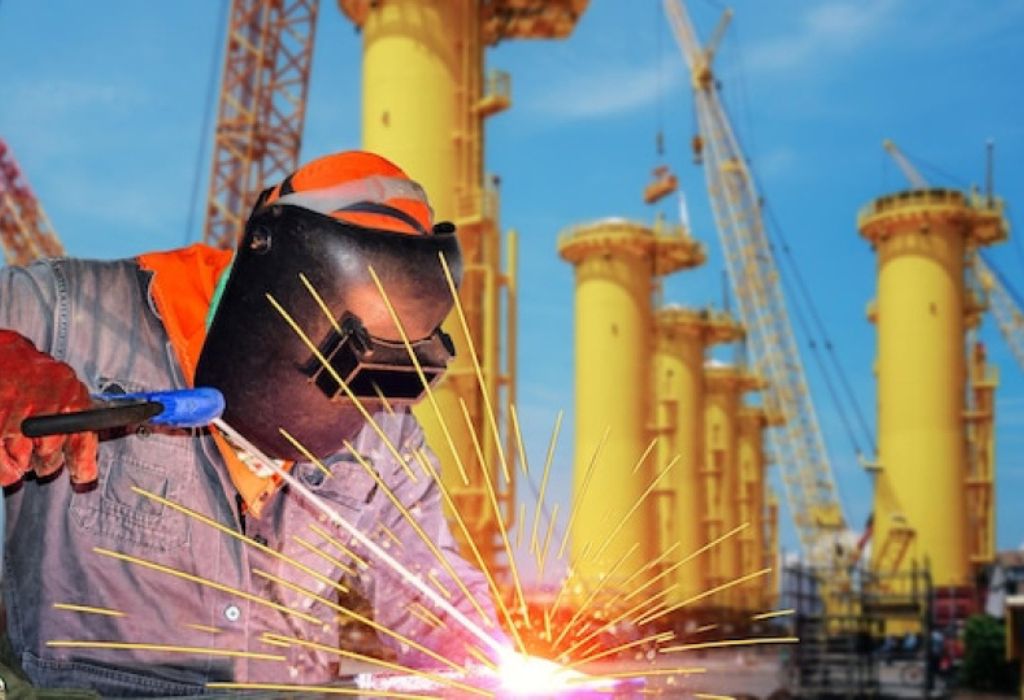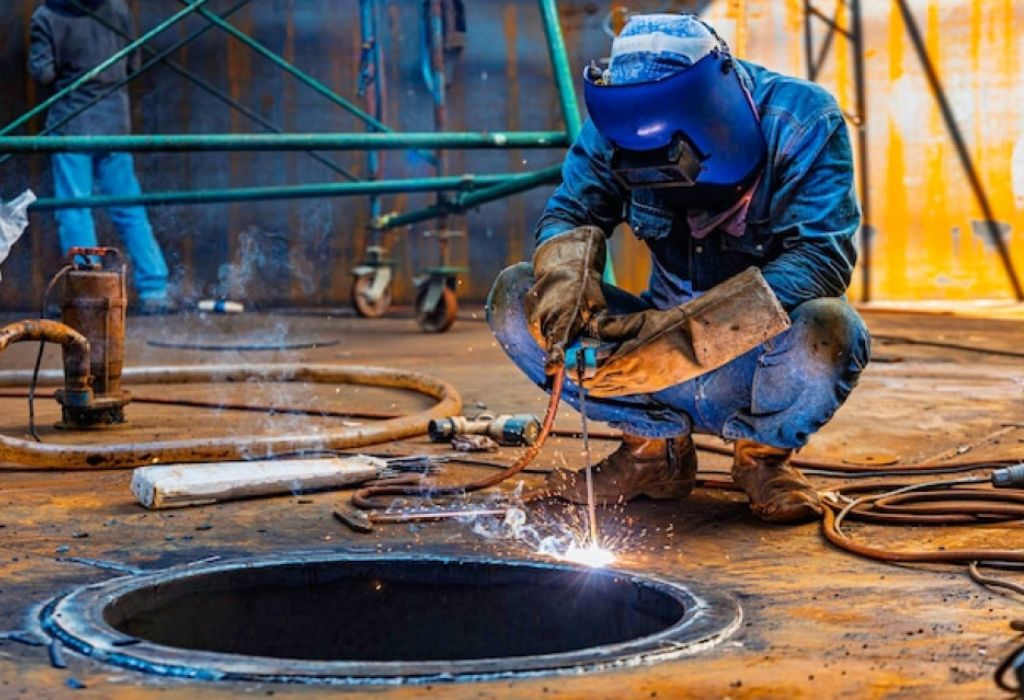The sun rises over a remote pipeline site as a welding truck rumbles into place.
Steel stretches across the horizon, waiting for joints to be cut, beveled, and fused.
At the center of this demanding environment stands the rig welder—a craftsman whose work ensures oil, gas, and energy continue to flow safely.
Many aspiring welders wonder: how do you become a rig welder trusted with such responsibility?
Rig welding is one of the most challenging and rewarding paths in the trade.
It requires years of preparation, certifications, and the grit to perform flawlessly under extreme conditions.
Unlike shop welders who work indoors with steady supervision, rig welders work independently in the field, often in unpredictable weather, with every weld subject to rigorous inspection.
The pathway begins with education and training. Trade schools, apprenticeships, and certifications like API 1104 for pipelines or AWS D1.1 for structural steel form the backbone of this career.
Passing advanced weld tests, such as the 6G pipe exam, marks the difference between average welders and rig welders ready for the field.
The rewards are significant. Rig welders often earn $40–$47 per hour, with experienced welders commanding much higher pay on specialized jobs (source).
Many invest in their own welding truck and operate as contractors, bringing freedom and higher earning potential.
This guide breaks down each step of the journey—education, certification, safety, building your rig, and finding work—so you’ll know exactly how to become a rig welder in 2025.
Understanding the Role of a Rig Welder

A rig welder is not simply another tradesperson with a welding hood. This position combines advanced skills with the independence of running a mobile business. Rig welders own a welding truck, generator, and specialized equipment, driving from job to job wherever skilled welds are needed.
Unlike shop welders who work in controlled environments, rig welders operate outdoors on pipelines, refineries, shipyards, and construction sites. Weather, terrain, and site hazards add complexity to their tasks, yet every weld must still meet inspection standards.
The job also demands versatility. A rig welder may weld pipe one day, repair structural steel the next, and troubleshoot equipment along the way. Inspectors, engineers, and foremen depend on them to deliver consistent results under pressure.
For anyone asking how do you become a rig welder, the first step is recognizing the responsibility. Rig welders are expected to work independently, adapt quickly, and deliver welds that meet strict codes every time.
What makes rig welders different from shop welders?
Rig welders bring their own equipment and work in the field.
Do rig welders own their tools?
Yes, they invest in a full welding rig and support equipment.
Where do rig welders work most often?
Pipelines, oilfields, refineries, and industrial projects.
Is rig welding more difficult than shop welding?
Yes, because conditions are less controlled and standards are higher.
Why are rig welders in demand?
They provide mobility, independence, and highly skilled labor.
Education and Training Requirements
The pathway to rig welding begins with foundational education. A high school diploma or GED is the minimum, since employers expect math, reading, and technical comprehension. Geometry and algebra are especially important for reading blueprints and calculating pipe angles.
Most aspiring welders pursue trade schools or vocational programs. These provide structured learning in SMAW, GMAW, GTAW, and FCAW welding methods. They also cover blueprint reading, metallurgy, and OSHA-approved safety procedures. Training can last from 6 months to 2 years, depending on program depth.
Apprenticeships provide another route. Working under master welders gives trainees real-world experience while they earn wages. Apprenticeships typically last 3–4 years, blending classroom sessions with thousands of hours of supervised practice.
For those asking how do you become a rig welder, classroom training is not enough. Employers want to see welders who can work in all positions—flat, horizontal, vertical, and overhead—under real field conditions.
Do rig welders need a college degree?
No, but vocational training is strongly recommended.
Is high school required?
Yes, most employers require a diploma or GED.
Are apprenticeships valuable?
Yes, they offer paid hands-on training.
Which welding process is most important?
Stick welding (SMAW) remains the foundation of pipeline welding.
How long does training take?
6–18 months in school or 3–4 years in an apprenticeship.
Certifications and Skill Development
Certification is the gateway to rig welding. Employers want proof that a welder’s skills meet industry standards. Common certifications include AWS D1.1 for structural welding and API 1104 for pipeline welding. These tests prove a welder can perform quality welds under inspection.
Passing the 6G pipe welding test is a milestone for aspiring rig welders. This test requires welding a fixed pipe in all positions, simulating the most difficult field conditions. Welders who pass earn respect and job opportunities.
Beyond certification, continuous skill development is critical. Rig welders must practice advanced techniques, stay updated with code changes, and learn to troubleshoot welding defects quickly. Employers and inspectors expect them to deliver consistent results under pressure.
For anyone asking how do you become a rig welder, the answer always includes certifications. Without them, landing field work on pipelines or rigs is nearly impossible.
Which certifications do rig welders need most?
API 1104 and AWS D1.1 are standard requirements.
Is the 6G test necessary?
Yes, it proves all-position welding skill.
Do certifications expire?
Yes, many require renewal every 6 months to 2 years.
Can you be a rig welder without certification?
No, most field jobs require certified welders.
How do welders practice for certification tests?
Through trade schools, apprenticeships, and mock test setups.
Building Your Rig and Equipment
Rig welders stand apart because they bring their own equipment. A welding truck fitted with a generator, leads, torches, grinders, and storage compartments is essential. These rigs act as mobile shops, enabling welders to take on jobs anywhere.
Investing in a welding machine is the most important step. Many rig welders choose engine-driven welders such as Lincoln or Miller models for reliable field performance. These machines power stick and flux-core welding, the backbone of pipeline work.
Additional tools include oxy-fuel torches for cutting and beveling, grinders for surface prep, and clamps for alignment. Safety gear, from PPE to fire-resistant clothing, is non-negotiable. Many welders also outfit trucks with air compressors and toolboxes for versatility.
Building a rig is costly, often exceeding $20,000–$40,000 depending on customization. However, owning equipment increases independence and allows welders to command higher pay.
Do rig welders buy their own trucks?
Yes, most purchase or customize welding rigs.
What welding machines are common for rigs?
Lincoln SA-200 and Miller Trailblazer are popular models.
How much does it cost to build a welding rig?
Between $20,000 and $40,000 on average.
Is safety equipment required?
Yes, PPE like helmets, gloves, and FR clothing is mandatory.
Why do welders invest so much in rigs?
Owning gear allows independence and higher income potential.
Safety and Work Environment
Rig welding is physically demanding and potentially hazardous. Welders work with high heat, heavy equipment, and sometimes in confined spaces or extreme weather. Safety training is critical to prevent accidents.
Protective clothing such as fire-resistant jackets, gloves, helmets, and boots protect against sparks and burns. Respiratory protection may be required when welding in enclosed areas. Eye and ear protection guard against long-term damage.
Work environments vary. Rig welders may work in blazing heat, freezing cold, or high winds. They often weld at heights, on scaffolding, or inside pipelines. Adaptability and caution are crucial.
For anyone asking how do you become a rig welder, the answer includes mastering safety. Employers want welders who understand hazards and know how to protect themselves and coworkers.
Is rig welding dangerous?
Yes, but safety training minimizes risks.
What PPE is required?
Helmets, gloves, FR clothing, respirators, and boots.
Do rig welders work in bad weather?
Yes, they often weld outdoors in extreme conditions.
Are safety inspections strict?
Yes, most sites require compliance with OSHA and company rules.
Can rig welders refuse unsafe work?
Yes, workers have the right to stop unsafe tasks.
Finding Work as a Rig Welder

After gaining certifications and building a rig, the next step is securing jobs. Rig welders often start by networking with contractors, union halls, or pipeline companies. Word-of-mouth remains one of the strongest ways to land work.
Many welders join unions such as the Pipeliners Local or seek work through job boards dedicated to skilled trades. Temporary contracts are common, with welders moving from one project to the next.
Experience builds reputation. Welders who consistently pass inspections and complete jobs on time earn trust, leading to repeat contracts and higher pay. Some even operate as independent contractors, choosing which projects to accept.
For those asking how do you become a rig welder, the final step is persistence. Building a reputation in this field takes time, but once established, opportunities open across industries.
How do rig welders find jobs?
Through unions, contractors, and networking.
Are jobs permanent or temporary?
Most are contract-based, lasting weeks to months.
Do rig welders travel often?
Yes, many travel to pipeline or refinery sites.
Can you be self-employed as a rig welder?
Yes, owning a rig allows independent contracting.
Is experience important in landing jobs?
Yes, reputation and passed inspections matter greatly.
Conclusion
So, how do you become a rig welder? The journey requires education, certifications, equipment investment, and resilience. From trade schools and apprenticeships to certifications like API 1104, every step builds credibility.
Owning a welding rig transforms welders into independent professionals, able to work across pipelines, refineries, and construction projects. Safety knowledge and adaptability ensure success in challenging environments.
Rig welders earn high pay and respect, but the path demands commitment. Those willing to invest time, money, and effort can enjoy rewarding careers that combine freedom, skill, and financial security.
Becoming a rig welder in 2025 is not just about learning to weld—it’s about mastering a trade, running a business, and stepping into a role that fuels entire industries.

I’m Darrell Julian, the founder, lead writer, and hands-on welding enthusiast behind ArcWeldingPro.com. With more than 15 years of real-world welding experience, I created this platform to share what I’ve learned in the field, in the shop, and in the heat of the arc.


